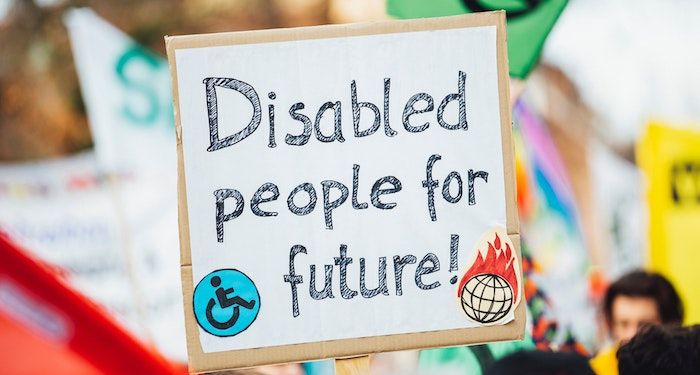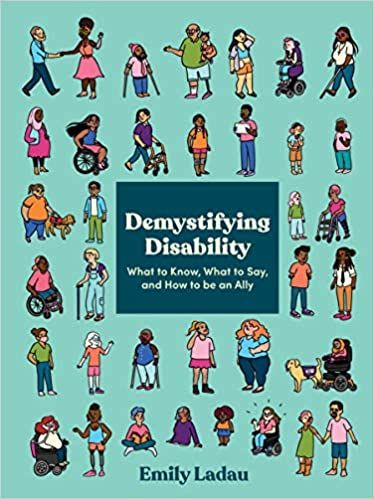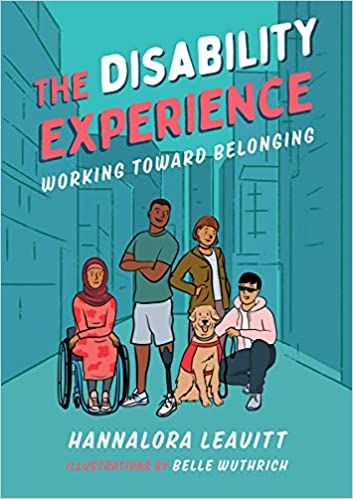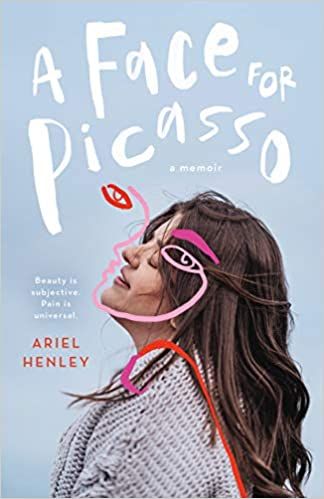
New and Forthcoming YA Disability Nonfiction
Disability is still wildly underrepresented in literature, be it for adults, for babies, or for young adults. It’s there if you look hard enough, but there’s simply not enough. Is it getting better than it once was? That’s hard to say, but at least when it comes to YA disability nonfiction, this year promises some outstanding and vital additions to your shelves.
The five books in this roundup showcase a wide range of disability experiences and narratives. Though they’re not all specifically published for teens, the ones that are published for a more broad audience are perfect for those seeking YA disability nonfiction. These are accessible titles for better understanding the tremendous range of disability experiences.
It should come as little surprise that this list is quite white. Given the challenge of seeing disability represented in literature, on top of disability in nonfiction for YA readers, the authorship reflects the larger landscape of publishing (though, interestingly, not the larger landscape of YA nonfiction, which is and has been quite diverse). Wong’s title below highlights a range of inclusive and intersectional experiences, and hopefully as more disabled voices are given platforms in traditional publishing, we’ll see more disabled writers of color and Indigenous backgrounds emerge. For more disability representation in nonfiction, especially that which intersects with race, dig into this earlier and still relevant list of true stories about life with disability.
Outstanding 2021 YA Disability Nonfiction

Demystifying Disability: What to Know, What to Say, and How to Be an Ally by Emily Ladau (September 7)
If being a good ally to disabled people is your goal — and it should be the goal of any decent human being — Ladau’s guide is a goldmine. This #OwnVoices handbook covers disability history, ways to recognize and avoid ableism, how to advocate for better representation of disability in the media, where and how to make accessibility the first and foremost thought in daily life, and so much more.
Let’s take a moment here to appreciate the cover as well. Talk about intersectional and representative of the realities of disabled life.

The Disability Experience: Working Toward Belonging by Hannalora Leavitt and Belle Wuthrich
Before talking about what the book covers, it’s worth noting that the book uses the phrase “people with disabilities (PWD)” throughout. This person-first language is powerful and meaningful for some but it is not a universally preferred way to address disabled people. Respect what a disabled person chooses to use when it comes to addressing them, rather than insisting there is one correct way to do so (this has happened to me, a disabled person, and it is so disrespectful).
The book itself highlights the challenges and triumphs of disabled people and specifically addresses the various manners in which daily life becomes unnecessarily cumbersome for folks who need accommodations. Included are stories of a wide range of disabled people, as well as change makers in the world of disability justice.

Disability Visibility (Adapted for Young Readers): 17 First Person Stories for Today Edited by Alice Wong (October 26)
I could not think of a more important book to be adapted for young adults than Wong’s powerful collection of essays from a wide range of voices about life with disability. Speaking to the past, present, and future of disability justice and advocacy, this collection is a powerhouse and vital reading. Wong brings together an array of contributors and explores how much — and how little — has been done to serve disabled people after the passing of the Americans with Disabilities Act of 1990 (yes, it was only passed in 1990).

A Face for Picasso: Coming of Age with Crouzon Syndrome by Ariel Henley (November 2)
Ariel and her twin sister Zan were the first twins known to survive a Crouzon syndrome diagnosis at the age of 8 months old. The rare syndrome causes facial disfigurement, as the bones in the head prematurely fuse, and the girls experienced numerous surgeries throughout their young lives.
Ariel’s memoir is about the physical, emotional, and mental experiences of life with her disability, as well as what it is to develop a deep sisterly bond, what beauty and resilience look like, and more. And indeed, that’s Ariel’s face on a YA book cover!

Rolling Warrior: The Incredible, Sometimes Awkward, True Story of a Rebel Girl on Wheels Who Helped Spark a Revolution by Judy Heumann with Kristen Joiner
This is Judy Heumann’s memoir, one of the most influential disability rights activists in U.S. history, and while her work in advocacy as an adult is explored in the book, what’ll be especially resonant in this book is Heumann’s young life with disability. She was barred from kindergarten because the principal deemed her a “fire hazard,” and her parents homeschooled her until they could find her a school for disabled kids. High school? Heumann almost didn’t graduate because she couldn’t complete the physical education requirement. College? The “fire hazard” discussion emerged again.
This is a must-read about advocacy, about activism, and about the realities of living with disability — even in “progressive” communities like the one Heumann grew up in, disability remained at the back of the minds of too many making the rules, decisions, and laws that impact everyday life.
In an era where accessibility should be at the forefront, particularly as society works toward “returning to normal” “post-pandemic,” these books are essential reading and a reminder why that “normal” is short sighted, often leaving behind some of the most vulnerable among us.

















